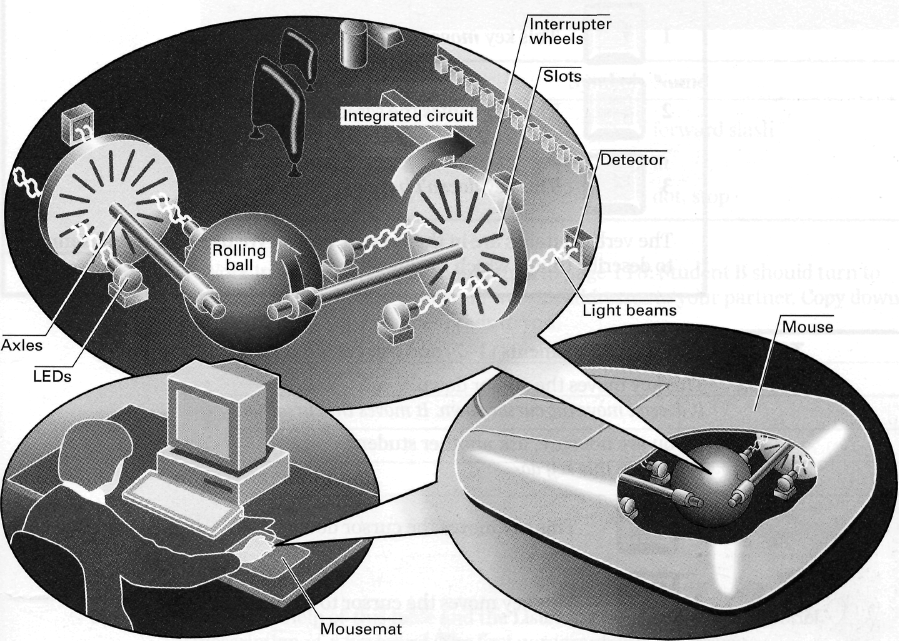
Listening: The keyboard
Task 2 Say if you can name any of the sections of the keyboard.
Study this keyboard. The keys are in four sections. Can you name any of the j sections?

Task3
This is a very quick scanning activity - take one minute (or less!) to do it.
Locate these keys on the keyboard as quickly as you can. Number them 1 to 8
Insert
minus
plus
Delete
Comma
F l
Print Screen
Escape
See Task 4 for key.
Task 4 Listen to this description of the keyboard in Task 2. Label each section of the diagram.
The purpose of Task 4 is to identify these terms by the associated vocabulary from Tasks 1,2, and 3 .
You will hear a description of the keyboard that you have been looking at, and have to label each of the four sections. You need to listen for and recognize the names of the various keys, and then link them with the four sections – main keyboard, function keys, editing keys, and numeric keypad. You may already have elicited some or all of these section names in Task 2 above. If not, you can either put them on the board now, or see if you will be able to extract them from the recording yourselves.
Reading: The mouse
Task 5 Study this diagram which explains how a common type of mouse works. Then complete each of these statements with one word.

1 Move the mouse to the left and the cursor moves to the______________.
2 The mouse contains a rolling ________________.
3 There are _______________ axles inside the mouse and two interrupter wheels.
4 When you move the mouse, the ball ________________.
5 The mouse moves over a mouse _______________.
Task 6 Now read this text to check your answers.
The computer mouse is a hand-operated device that lets you control more easily the location of the pointer on your screen. You can make selections and choices with the mouse button.
The mouse contains a rubber-coated ball that rests on the surface of your working area or a mousemat. When the mouse is moved over that surface, the ball rolls.
The ball's movements up and down, and left and right, turn the two axles inside the mouse. As they turn, detectors register the changing position. A small integrated circuit inside the mouse sends signals to the operating system, which instructs it to move the pointer on your screen.
Work in pairs to check the answers.
Language work: Present simple
The description of how the mouse works uses the Present simple tense. This is the tense used to describe actions that are habitual or always true. Write some more examples, for example:
The lesson begins at 9.30 and finishes at 11.00.
Cars in the UK drive on the left.
Computers use electricity.
We study English twice a week.
Elicit the difference between the singular and plural of the structure, i.e. that the У on the end of the verb is used for the singular. Try to elicit some more examples before going on to introduce the negative form of the present simple using does not (often abbreviated to doesn't) for the singular, and do not (often abbreviated to don't) for the plural, followed by the infinitive form of the verb.
Study these statements about keys.
![]()
This key moves the cursor down.
This key copies the screen display.
This key doesn't have a fixed function.
The verbs in italics are in the Present simple. We use the Present simple to describe things which are always true.
Task 7 Look at the statements (1-7) and correct the ones which are wrong.
You should correct the false statements by first negating them
- This key doesn't move the cursor down - and then give the correct statement
- This key moves the cursor up.
Check the answers in pairs before correcting the exercise as a class.
If you are not sure, ask another student. What does this key do?

This key moves the cursor down.
This key moves the cursor to the right.
This key inserts a character.
This key copies the screen display.
This key moves the screen up.
This key doesn't have a fixed function.
This key gives you all lower case letters.
